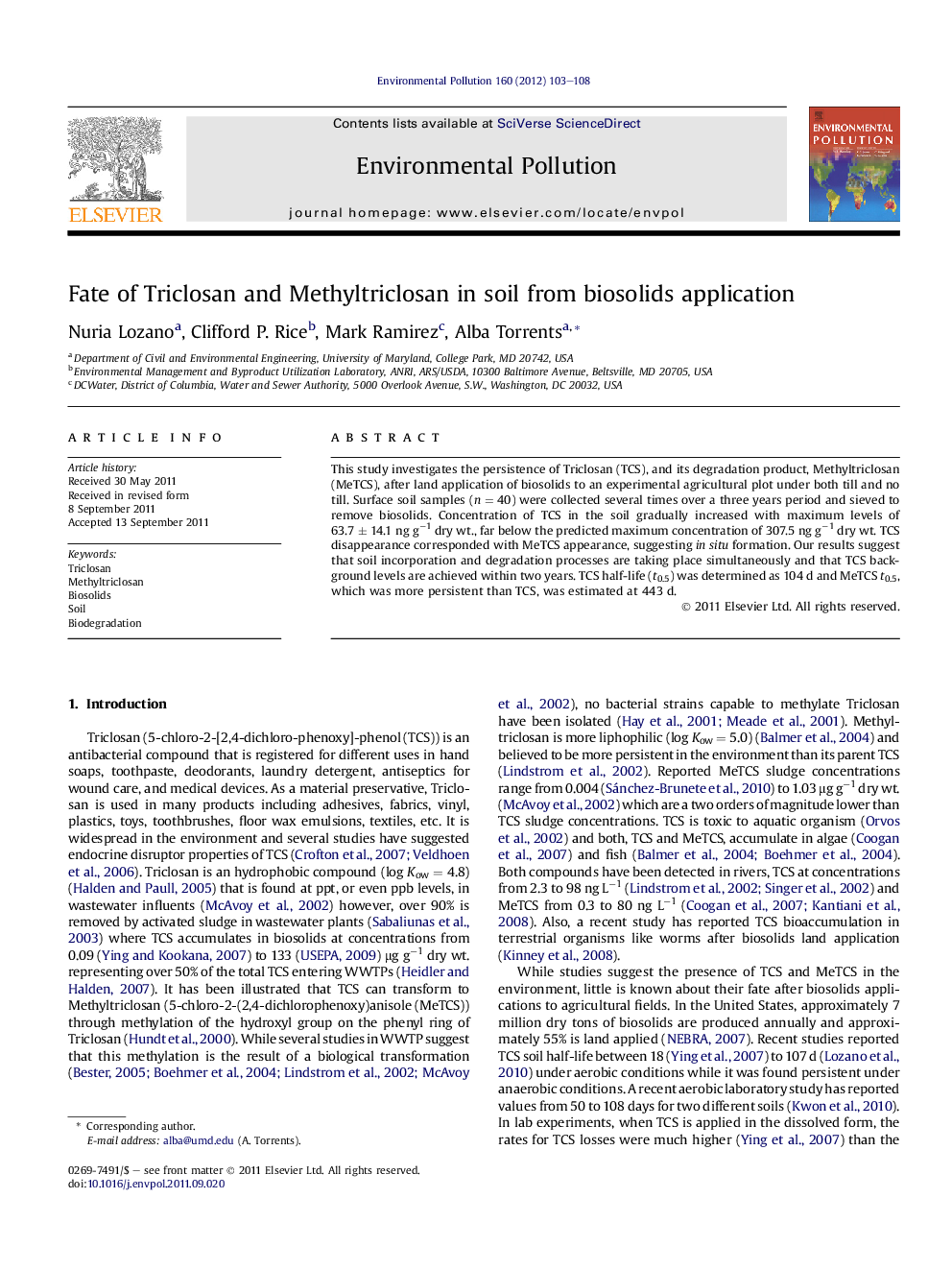| Article ID | Journal | Published Year | Pages | File Type |
|---|---|---|---|---|
| 4424690 | Environmental Pollution | 2012 | 6 Pages |
This study investigates the persistence of Triclosan (TCS), and its degradation product, Methyltriclosan (MeTCS), after land application of biosolids to an experimental agricultural plot under both till and no till. Surface soil samples (n = 40) were collected several times over a three years period and sieved to remove biosolids. Concentration of TCS in the soil gradually increased with maximum levels of 63.7 ± 14.1 ng g−1 dry wt., far below the predicted maximum concentration of 307.5 ng g−1 dry wt. TCS disappearance corresponded with MeTCS appearance, suggesting in situ formation. Our results suggest that soil incorporation and degradation processes are taking place simultaneously and that TCS background levels are achieved within two years. TCS half-life (t0.5) was determined as 104 d and MeTCS t0.5, which was more persistent than TCS, was estimated at 443 d.
► Fate of Triclosan (TCS) is soils after a single biosolids application was studied. ► Soil TCS increased for 8 months after application. ► Background levels were reached in 2 years for TCS. ► Methyltriclosan was formed in situ and was much more persistent than TCS. ► Soil incorporation and degradation processes are taking place simultaneously.
